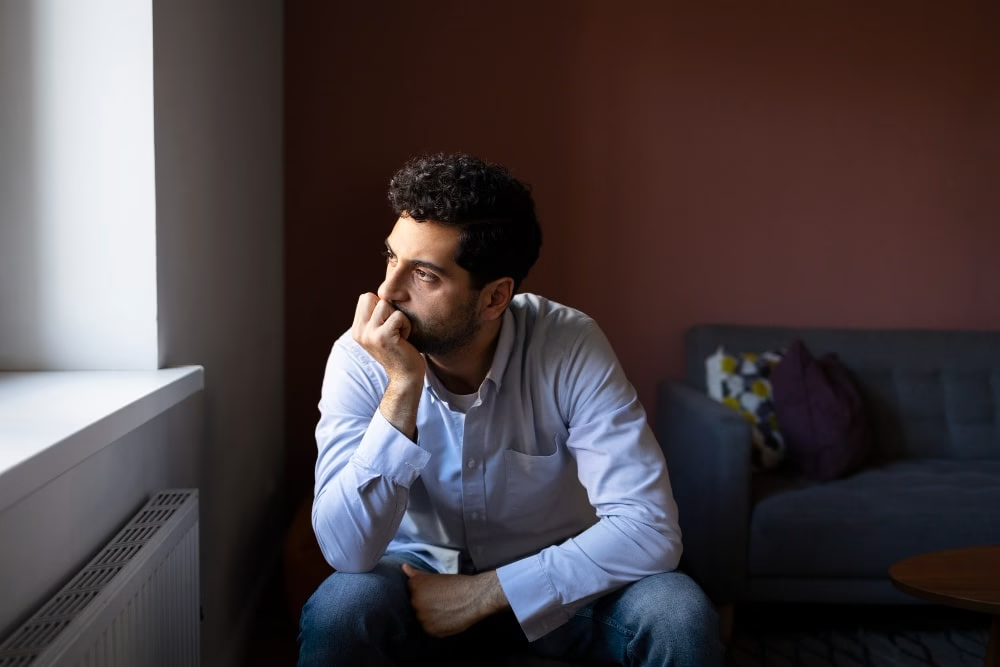We all feel low or worried from time to time. But when those feelings stick around for weeks or months, they can start to change how we live, how we think, and how we connect with others. That is when it becomes more than just a passing mood; it may be depression or anxiety.
Both depression and anxiety are common mental health conditions. They often show up together, but they are not the same. Knowing how to tell them apart is important because it helps you seek the right kind of care. And with options like telehealth for anxiety and depression becoming more accessible than ever, support is just a click away.
So, how do you know what you are dealing with? Let’s explore what each condition looks like, how they overlap, and how you can begin to find relief.
Depression: The Weight That Pulls You Down
Depression is not just sadness. It can feel like emotional heaviness, emptiness, or numbness. People with depression often describe a loss of joy in the things they once loved. Every day tasks like getting out of bed, brushing your teeth, or replying to a text message can feel overwhelming.
Signs you may be dealing with depression:
- You feel persistently sad, empty, or hopeless
- You have lost interest in hobbies or social connections
- You feel exhausted, even after sleeping
- Your appetite or weight has changed significantly
- You experience feelings of guilt or worthlessness
- You have trouble concentrating or making decisions
- Thoughts of death or self-harm may creep in
If this sounds familiar, know that you are not alone. Depression is incredibly common, and there is no shame in struggling. In fact, more people than ever are turning to telehealth for anxiety and depression because it allows them to speak with a mental health professional from the privacy of their own home.
Anxiety: The Constant Internal Alarm
Anxiety can feel like your mind is always running, racing thoughts, worst-case scenarios, a sense of dread that never fully goes away. Even when things are fine on the outside, your inner world feels on edge.
Signs you may be dealing with anxiety:
- You worry excessively about everyday situations
- Your mind jumps quickly to what might go wrong
- You have trouble relaxing or sitting still
- You feel restless, tense, or easily startled
- Your heart may race, palms sweat, or stomach churn
- You have trouble sleeping because your thoughts will not quiet down
Anxiety often makes people feel like they are bracing for something bad, even when they cannot name what it is. For many, telehealth for anxiety and depression offers a lifeline—immediate, judgment-free support when they need it most.
Can You Have Both?
Yes. In fact, it is very common to experience depression and anxiety at the same time. One can lead to the other, or they can develop side by side. You may feel both numb and overwhelmed. Both tired and wired. You may withdraw from life and still feel a constant buzz of nervous energy.
If you see signs of both in yourself, that is okay. The good news is that treatment can address both conditions, especially when you work with someone trained to understand the full picture. Many providers who offer telehealth for anxiety and depression are skilled at treating co-occurring symptoms.
How to Tell the Difference
It is not always easy to separate depression and anxiety, especially when they overlap. But asking yourself a few key questions may help you get clarity:
- Do I feel more stuck in the past or more afraid of the future?
Depression often pulls you into regret or hopelessness. Anxiety tends to push you into fear of what might come next. - Do I feel mostly flat and unmotivated, or keyed up and restless?
Depression drains energy and flattens emotions. Anxiety builds tension and speeds everything up. - What is hardest for me—feeling nothing or feeling too much?
People with depression often feel emotionally numb. People with anxiety often feel overstimulated.
Of course, you do not need to have the perfect label to seek help. Whether you are feeling low, anxious, or both, your suffering is real and valid. And support is available through telehealth for anxiety and depression that meets you where you are, literally and emotionally.
Seeking the Right Help
Getting better starts with reaching out. And with so many online resources now available, you do not have to wait weeks or rearrange your schedule to find care. Telehealth for anxiety and depression has made mental health support more accessible than ever before.
Benefits of using telehealth for anxiety and depression:
- You can talk to a licensed professional from your home
- Appointments are often more flexible and private
- It reduces the barrier of traveling when you feel drained or anxious
- It connects you with specialists who understand your exact needs
Therapy, medication, or a mix of both can help you feel more like yourself again. You might start small, maybe a short video session once a week, but those steps add up. Healing is not always loud or dramatic. Sometimes, it is just feeling a little more like you each day.
Final Thoughts
Whether you are navigating depression, anxiety, or both, you do not have to figure it out alone. These conditions are treatable, and you are worthy of feeling better.
Understanding the difference between depression and anxiety is a powerful first step. But even more powerful is the decision to reach out for help, especially when options like telehealth for anxiety and depression make that help easier and more convenient than ever before.
You do not have to wait until you hit rock bottom. You do not need to have all the answers. You just need to take that first brave step toward feeling well again.




